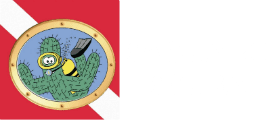Cocos Island is one of the most remote and stunning scuba diving destinations in the world. Located in the Pacific Ocean, off the coast of Costa Rica, this uninhabited island is famous for its vibrant marine life and exceptional dive sites. Here’s everything you need to know about scuba diving at Cocos Island.
Diving conditions
Cocos Island is known for its challenging diving conditions, with strong currents and deep dive sites that require advanced diving skills. Most dive sites are located around the island’s perimeter, and dive depths which require an advanced certification. Due to its remote location, it’s recommended to go on a liveaboard diving trip to get the most out of your Cocos Island diving experience.
Marine life
Cocos Island is a UNESCO World Heritage Site and a protected marine park, known for its rich biodiversity and exceptional marine life. Divers can expect to encounter large schools of hammerhead sharks, whale sharks, manta rays, and other pelagic species. The island is also home to an abundance of reef fish, sea turtles, eels, and colorful corals.
Dive sites
Cocos Island is home to over 20 dive sites, each with its unique features and marine life. Here are some of the most popular dive sites:
- Alcyone: This is one of the most famous dive sites at Cocos Island, known for its large schools of hammerhead sharks that can be seen throughout the year.
- Dirty Rock: Located off the northern tip of Cocos Island, this dive site is known for its strong currents and sightings of whale sharks and other pelagic species.
- Manuelita: This dive site is known for its diverse marine life, including hammerhead sharks, eagle rays, and sea turtles.
- Bajo Alcyone: This deep dive site is known for its large schools of hammerhead sharks, as well as sightings of manta rays and other pelagic species.
- Dos Amigos: Located off the southern tip of Cocos Island, this dive site is known for its underwater pinnacles and large schools of reef fish.
Conclusion
Scuba diving at Cocos Island is an unforgettable experience that should be on every diver’s bucket list. With its stunning marine life, challenging dive conditions, and remote location, it’s truly a once-in-a-lifetime diving destination. However, due to its protected status, it’s important to dive responsibly and follow all regulations to help preserve this incredible marine ecosystem for future generations.


